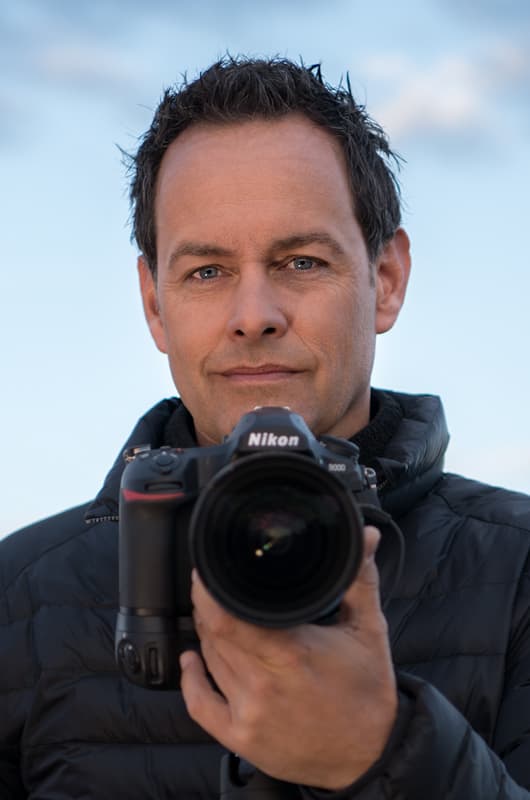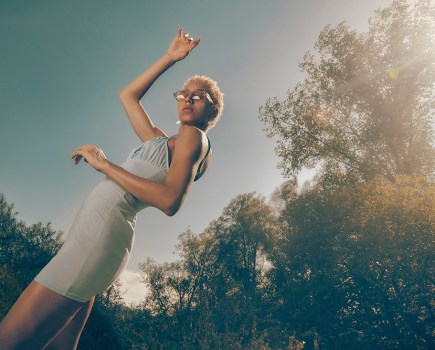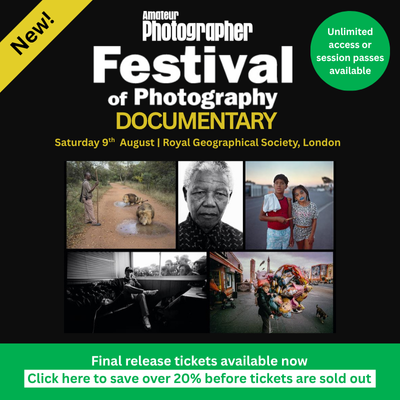One of the golden rules of wildlife photography is to try to photograph your subjects at eye level or lower, . The reason for this rule is simple: when you’re at eye level with your subjects you feel much more of a connection – it’s like you’re one of them. The opposite is also true. When you look down on your subjects, it metaphorically feels like you’re looking down on them. This is often called ‘the zoo perspective’, and it’s not good. So shooting from low angles is essential to achieve more natural-looking wildlife images.
Professional wildlife photographers will therefore go to great lengths to try to get as low down as possible. Every centimetre counts – the lower the better. While I will be the first to say that nature photography is an art form, and in art, there are no rules, this one is right more often than not.
If you’re new to wildlife photography or are looking for more tips and advice before heading away on safari, check out our Complete guide to wildlife photography.

Marsel van Oosten Photographing elephants in Zambia. The ground had been eroded by water from the Zambesi River, which caused natural gullies.
As simple as this may sound, it’s often quite the challenge to get an eye-level perspective. When photographing African wildlife, I am often in a vehicle and am therefore slightly elevated. I will be lower than eye level when shooting elephants and giraffes, but I will be looking down on lions and similar-sized animals.
Unfortunately, I can’t just hop out of the vehicle to lay flat on the ground as this would spook the wildlife and be potentially dangerous. So, most of the time, I’ll stay in the vehicle and simply move further away from my subject to lower the angle of view.
Our guide to the Best budget telephoto lenses for wildlife is here to help if you want to photograph wild animals but are worried about the cost.
Position yourself for low angles
Luckily, there are a few tricks that I can use to get that coveted low angle. I sometimes lay flat underneath my vehicle so that I am well-protected and don’t stand out much. A lot of animals are used to seeing vehicles, but not the shape of a human. They can be totally relaxed when you’re inside your Land Cruiser, but run away when you step out. I have successfully photographed elephants, rhinos, tigers, and buffalo this way.
For all shoots, I prefer vehicles with no door and no roof because sometimes, if something big flies over, a roof is really going to obstruct your view. When you’re parking underneath a tree, because there’s a leopard in the tree, you don’t want a roof over your head. So, completely open vehicles are the best – the more open, the better.
Another trick is to use a sunken hide. Hide photography is a great way to be unobtrusive and wait for the animal to get close to you. Sunken hides are almost like sea containers, which are just put in a hole, with only the top 10% sticking out. That’s the idea. Sometimes it’s fancier and it’ll be an entire structure built with concrete or bricks, which is like a little room. But the idea is always to just get you shooting as close as possible to ground level or water level.

Lion cubs drinking, Greater Kruger National Park, South Africa. Nikon D850, AF-S VR 70-200mm f/2.8 lens, 1/320sec at f/5.6, ISO 3200. Image: Marsel van Oosten
When your hide is next to a watering hole, animals will come to you. I am a big fan of hides that are lowered into the ground. So much so, that I set up the world’s first ‘All Hides’ photo tour several years ago. On one of those trips we spent a morning inside a small bird hide next to a small watering hole. It wasn’t productive at all and we were wondering why it was so quiet.
Then, suddenly, a small lion cub walked into our frame and started drinking, soon followed by another one, and another, until there were six. Six little lions drinking less than three metres from our lenses! As this was an open hide, the cubs could see and hear us but they were very relaxed. They were so close, that I could hear their tiny tongues lapping up the water – an unforgettable experience.
As told to Steve Fairclough.
Marsel van Oosten

Marsel van Oosten was born in The Netherlands and worked as an art director for 15 years. He switched careers to become a photographer and has since won Wildlife Photographer of the Year and Travel Photographer of the Year. He’s a regular contributor to National Geographic and runs nature photography tours around the world. Visit www.squiver.com
Related reading:
Whether you’re new to wildlife and nature photography or looking to improve your skills, we have plenty of tips and techniques to help you on your way. Take a look here.
Our Photographing Wildlife by understanding animal behaviour article is also well worth checking out.
See more of Marsel van Oosten’s columns:
- You need better backgrounds
- Why scale is important
- How to pre-visualise a photograph
- Making the most of bad weather
- Why planning is important in photography
- How to get closer to wildlife without dying
Follow AP on Facebook, Twitter, Instagram, YouTube and TikTok.










